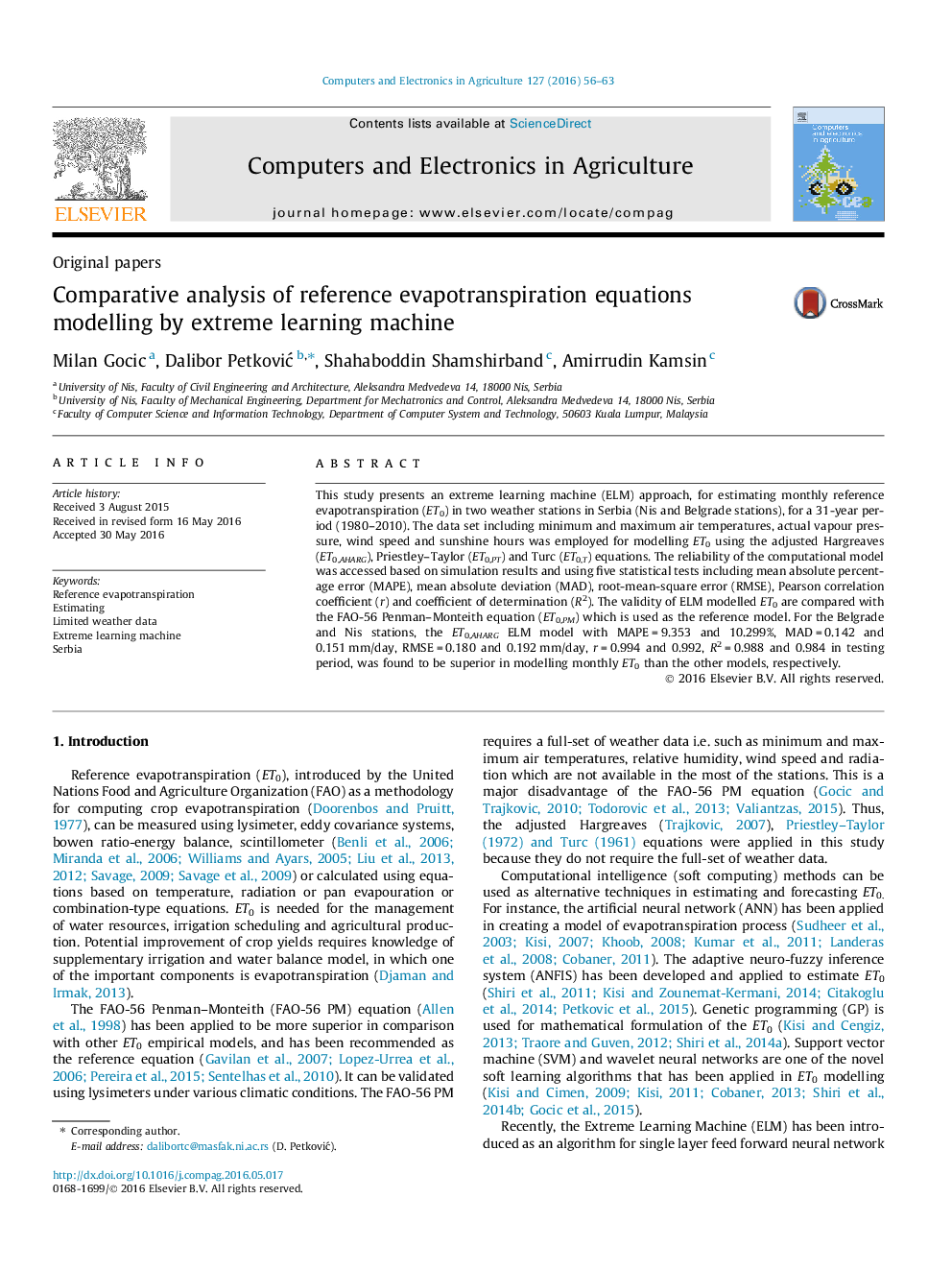| Article ID | Journal | Published Year | Pages | File Type |
|---|---|---|---|---|
| 6540044 | Computers and Electronics in Agriculture | 2016 | 8 Pages |
Abstract
This study presents an extreme learning machine (ELM) approach, for estimating monthly reference evapotranspiration (ET0) in two weather stations in Serbia (Nis and Belgrade stations), for a 31-year period (1980-2010). The data set including minimum and maximum air temperatures, actual vapour pressure, wind speed and sunshine hours was employed for modelling ET0 using the adjusted Hargreaves (ET0,AHARG), Priestley-Taylor (ET0,PT) and Turc (ET0,T) equations. The reliability of the computational model was accessed based on simulation results and using five statistical tests including mean absolute percentage error (MAPE), mean absolute deviation (MAD), root-mean-square error (RMSE), Pearson correlation coefficient (r) and coefficient of determination (R2). The validity of ELM modelled ET0 are compared with the FAO-56 Penman-Monteith equation (ET0,PM) which is used as the reference model. For the Belgrade and Nis stations, the ET0,AHARG ELM model with MAPE = 9.353 and 10.299%, MAD = 0.142 and 0.151 mm/day, RMSE = 0.180 and 0.192 mm/day, r = 0.994 and 0.992, R2 = 0.988 and 0.984 in testing period, was found to be superior in modelling monthly ET0 than the other models, respectively.
Related Topics
Physical Sciences and Engineering
Computer Science
Computer Science Applications
Authors
Milan Gocic, Dalibor PetkoviÄ, Shahaboddin Shamshirband, Amirrudin Kamsin,
